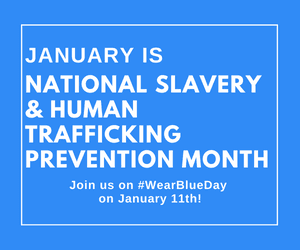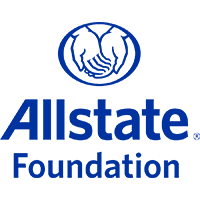
January is National Slavery and Human Trafficking Prevention Month. NYSCADV encourages you to learn more about this serious crime that leads to grave human rights violations.
Human trafficking is a form of modern-day slavery. This crime occurs when a trafficker uses force, fraud or coercion to control another person to engage in commercial sex acts or solicit labor or services against their will.
Human trafficking often intersects with domestic violence. According to Freedom Network USA, a coalition of experts and advocates fighting human trafficking in the US, this intersection takes many forms, including:
- when traffickers are also domestic violence offenders;
- when traffickers use a victim’s complex history and history of abuse to further other forms of abuse in trafficking;
- when traffickers use a victim’s history of trafficking to intimidate, control and further abuse them; and,
- because both domestic violence and human trafficking impact a victim’s ability to trust institutions, state structures, and people in general.[1]
In NYS, sex trafficking and child sex trafficking are both class B felonies. NYS has passed several laws to raise awareness about and support survivors of human trafficking. Since 2018, the Legislature approved the following:
- A new law allowing human trafficking survivors to request their cases be moved to a specialized Human Trafficking Intervention Court located elsewhere in the county or an adjoining county if one exists;
- A new law requiring lodging facilities such as hotels and motels to post information on services available for human trafficking survivors and the national human trafficking hotline number;
- A new law authorizing the state Office of Temporary and Disability Assistance to contract with not-for-profits to create “short-term” and “long-term” safe housing residential facilities for human trafficking survivors;
- A new law eliminating the need for prosecutors to prove force, fraud or coercion to find an individual guilty of sex trafficking of a child under 18;
- A new law extending the rape shield law to sex trafficking victims; and,
- A new law enabling victims of human trafficking to be eligible to participate in the Address Confidentiality Program, which allows victims to shield their actual address from abusers and offenders.
However, even with all this work accomplished, more needs to be done to raise awareness and support victims.
We can all do our part by learning the signs of human trafficking. With thousands of men, women and children being victimized every year, human trafficking can happen to individuals of any gender identity, age, race and nationality in any industry. Some common red flags to look out for include if an individual is showing signs of abuse; if a person is being underpaid or not paid at all, is working excessive hours or in dangerous working conditions; if a person is unable to leave home or work premises; if a person doesn’t have personal documents such as ID, passport or social security card; and if the person is under 18 and working in the commercial sex industry.[3]
You can also participate in #WearBlueDay on January 11th by wearing blue to show your support and promote awareness of human trafficking. Take a selfie to spread the word, use the hashtag #WearBlueDay, and encourage your network to take a selfie.
To learn more about human trafficking and its intersections with domestic violence, visit the following:
- National Human Trafficking Hotline: What is Human Trafficking?
- Polaris: Recognizing Human Trafficking
- Administration for Children & Families Office on Trafficking in Persons: National Human Trafficking Training and Technical Assistance Center (NHTTAC) – NHTTAC delivers training and technical assistance to inform and enhance the public health response to human trafficking.
- Freedom Network: Human Trafficking and Domestic Violence
- The Human Trafficking Legal Center: Human Trafficking and Domestic Violence Fact Sheet
- Center for Abuse Prevention: Human Trafficking Awareness Month Toolkit
[1] Freedom Network USA. (2015). Human Trafficking and Domestic Violence. https://freedomnetworkusa.org/app/uploads/2016/12/HT-and-Domestic-Violence.pdf
[2] Freedom Network USA. What Are the Signs of Trafficking? https://freedomnetworkusa.org/the-issue/. Accessed 15 December 2020.


